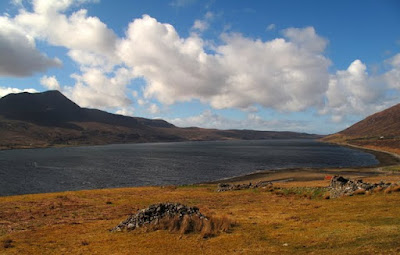Cairngorms: Camping in Glen Quoich
 |
| Camping amid the remnants of the Caledonian Forest in the Southern Cairngorms |
'Camping is vastly over-rated. Most local trips can be done without camping.'
Gadd, like many enthusiasts of the outdoors, is an activity based person. My impression is that the outdoors is primarily an arena in which he can strive for excellence in a variety of activities, each of which he practices to a very high standard. At the other end of the spectrum is someone like Ray Mears. When I heard him speak last year he modestly described his lifelong devotion to bushcraft as an excuse to spend time outside. I have a foot in both camps. For instance, I will admit that it is usually a mistake to attempt to combine camping - or bothying - with climbing, particularly in winter. So often the effort of humphing the huge bag that such a combination trip requires reduces or eliminates the possibility of actually doing any climbing. What you are left with is a camping trip that would have been more enjoyable without the climbing hardware in the bag. On the other hand, camping as an activity in its own right is my favourite way to spend time outdoors. That was the sport for the weekend past, a pure and simple camping trip.
 |
| Beinn a'Bhuird from the south |
My first glimpse of the pinewoods of Glen Quoich was on just the type of combination trip that I mentioned as being often unsuccessful above, a cycle and skitouring trip to Beinn a'Bhuird. When Pete proposed the idea to me I had scoffed that there was no snow and that he must be insane to consider such a plan. After some rumination, however, the audacity of the plan took hold of me. The absurdity of biking with ski and overnight kit into one of Scotland's most remote Munros, in the full knowledge that there was no snow, became an irresistible proposition. I mustered my family, at that point consisting only of partner and dog, and departed for Invercauld. After a moonlit cycle we passed the night in a place that shall remain nameless but that will no doubt be known to many readers of this blog. We woke to a fine and still spring day, the distant pinewoods of Glen Quoich looked so tempting, like a tiny oasis of North America lurking on the fringes of the Cairngorms, that the idea of camping there lodged in my brain. Life being what it is it took 5 years to return, my original party enlarged by the addition of a 3 year old daughter.
 |
| Evening light on the pinewoods below Beinn a'Bhuird |
Finally, a plug for a new blog that I have found, devoted to this tremendous area of Scotland, Cairngorm Wanderer.
Labels: Cairngorms, camping, scotland










